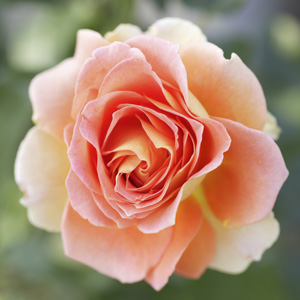Growing Roses in Pots
With their soft petals, gorgeous colours and delightful fragrance, roses are a gardener’s dream. Rose bushes are hardier than they look, and can in fact be successfully grown in a wide variety of conditions and locations. Planting roses in pots is an elegant way to appreciate the beautiful blooms in a limited space — whether that be a sunny kitchen, balcony, or patio.
One of the many benefits to planting roses in pots is that it allows you to better control the growing conditions. This can be helpful if your garden has too much shade, poor soil, or limited drainage.
Whether you’re a beginner gardener or an experienced green thumb, here are our best tips for growing beautiful potted roses this year.

Should I Choose Potted or Bare Root Roses?
When growing roses in pots, some gardeners opt for pre-potted roses. These are roses that are supplied in potting mix, and are often already laden with mature stem foliage or blooms. While the year-round availability of pre-potted roses makes them a convenient option for most gardeners, they also tend to be more expensive and come in less varieties than other types of roses. For this reason, many gardeners instead prefer to undertake the potting process themselves using bare root roses.
As bare root roses are delivered without soil — and therefore also without an established root system — it is easier for these roses to acclimatise to their new surroundings. While it may take a little bit longer to see a bare root rose bloom, it is a simple, low-effort and incredibly cost effective way to grow roses in pots.
The Best Roses for Pots
Although nearly any type of rose can be grown in a pot, some are easier to grow than others. Those best suited for the job include small shrub roses, polyanthas, minifloras, and miniature roses. Many gardening enthusiasts also grow ground cover roses, which can be placed in hanging baskets or window boxes to add a lively splash of colour to patios or outdoor living spaces. For the best results, experts recommend selecting rose varieties that bloom multiple times throughout the year rather than once per season.
Growing Roses in Pots: Step By Step
Choose a Pot
Select a pot or container that is in proportion to the size of your rose. Ideally, this pot should be large enough to accommodate the current size of the root, while also offering plenty of room for growth. In general, larger pots are better because they allow the roots to go deeper, where the soil temperature is cooler and has greater levels of moisture.
You might also like to consider the colour of the container. It’s best to avoid dark-coloured pots as they are known to absorb more heat and place greater stress on the plant. No matter which type of pot you choose, you should ensure it has enough drainage holes to allow for optimal drainage and prevent root rot.
Find the Right Soil
Growing a beautiful potted rose plant means giving it the nutrients it needs to thrive. The best soil for roses in pots generally combines a high-quality soilless mix with a nutrient-dense compost. To really help your roses grow, select a good quality potting mix manufactured specifically for roses.
Secure the Sun
Most varieties of roses do best when they receive at least six hours of sun each day.
Too much sun can overheat the pot and frazzle the roots, especially in hot climates. For the best blooms, place your pot in a location that receives a mix of sun and shade.
Keep Watering
Knowing when to water your potted roses can be a little bit tricky. When the top few centimetres of soil feel dry to the touch, saturate the soil until water runs from the drainage holes at the bottom of the pot. In extremely hot summer temperatures, you may have to water every day.
Ready to Repot
If you’d like to keep your roses in pots, they will eventually need to be transferred into larger containers to allow the roots to grow. Because roses are heavy feeders, they will draw the nutrients out of soil over time. For best results use a slow release fertiliser for roses every 3-4 months. It is always best to follow the manufacturers’ directions on the packet.. The best time to do any repotting or pruning work is in winter or early spring, as this is when the plants are dormant.

If you’re looking to add some gorgeous potted roses to your home, Garden Express has everything you need to get started. Give us a call on 1300 606 242, or fill out our online contact form to find the perfect roses for your growing flower collection.







Comments are closed.